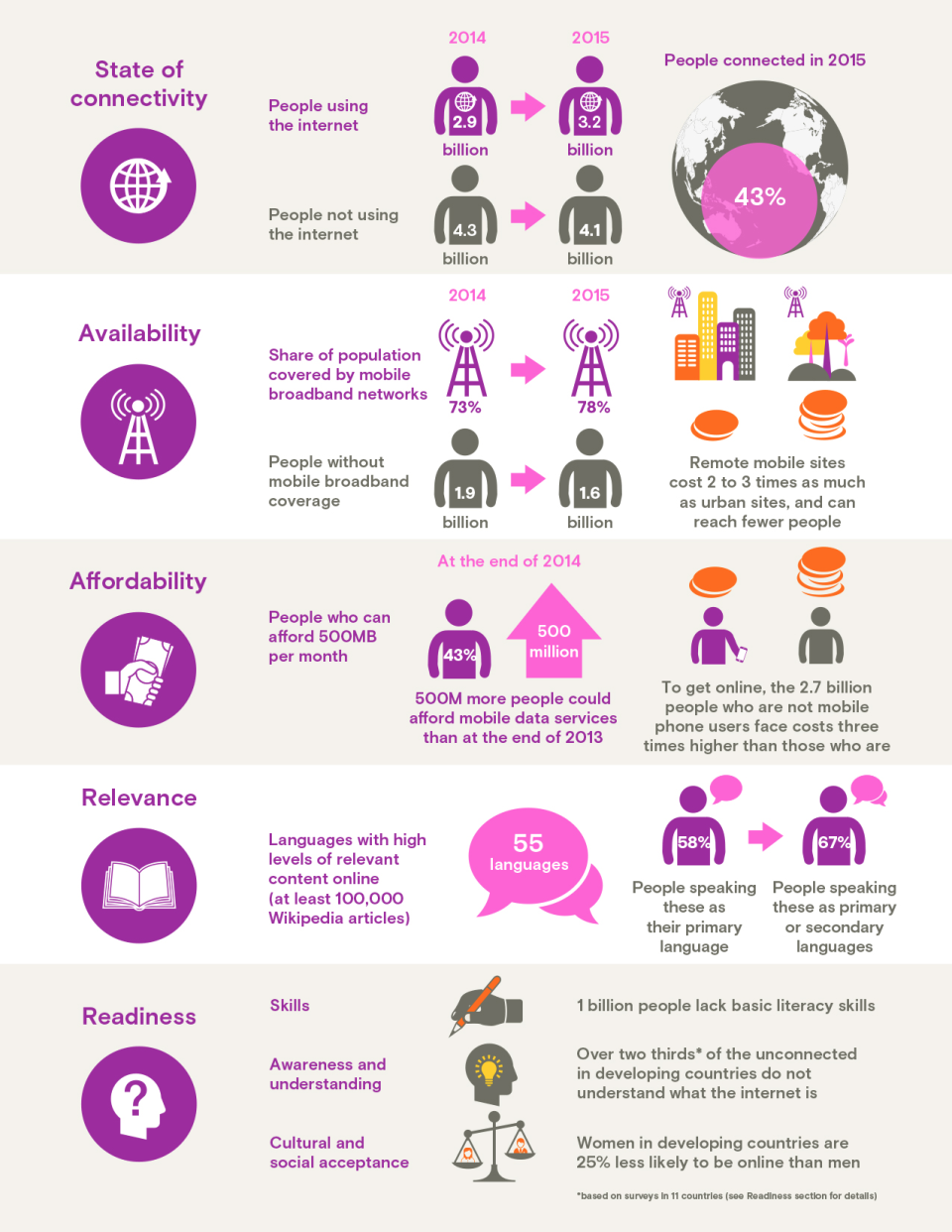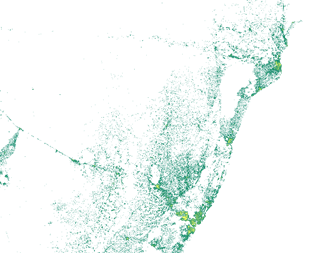State of Connectivity 2015: A Report on Global Internet Access, the second annual study by Facebook, takes a close look at the current state of global internet connectivity, how it has changed since 2014 and how we can use the data identified to generate new insights.
At the end of 2015, estimates showed that 3.2 billion people were online. This increase (up from 3 billion in 2014) is partly attributed to more affordable data and rising global incomes in 2014. Over the past 10 years, connectivity increased by approximately 200 to 300 million people per year.
While this is positive news in terms of growth, it also means that globally, 4.1 billion people were still not internet users in 2015.
The four key barriers to internet access include:
- Availability: Proximity of the necessary infrastructure required for access.
- Affordability: The cost of access relative to income.
- Relevance: A reason for access, such as primary language content.
- Readiness: The capacity to access, including skills, awareness and cultural acceptance.

In order to address the barriers to connectivity, corporations, governments, NGOs and non-profits need to work together to continue gathering more accurate data on the state of global connectivity, and develop global standards for collecting, reporting, and distributing this data.
As one example, Facebook is collaborating with the Center for International Earth Science Information Network at Columbia University to produce detailed maps showing the population distribution of 20 countries. These maps were created using new machine learning techniques and show the most accurate estimates of population distribution and settlements available to date.

Figure 1A: Existing Population Distribution (Gridded Population of the World Dataset (GPW) of a coastal region in Kenya.

Figure 1B: New Facebook estimates of population distribution based on processing of third party satellite images, of the same region shown in figure 1A.
This data will give us a greater understanding of how populations are dispersed, so governments and others can prioritize investments in infrastructure, from transportation to healthcare and education. It can also help rapid response times during emergencies and other disasters and inform our understanding of the ecological impact of growth.
Population distribution data will also help guide Facebook’s Connectivity Lab. It will help identify the types of projects to prioritize and support target developments. Later this year, Facebook will open source the detailed population estimates.
Through the development of reports like the State of Connectivity, along with wider collaboration with industry and beyond, we hope to address the chief barriers to access, and soon, close the digital divide.
Read the full State of Connectivity report here.
Read more about Data-Assisted Population Distribution Mapping here and here.